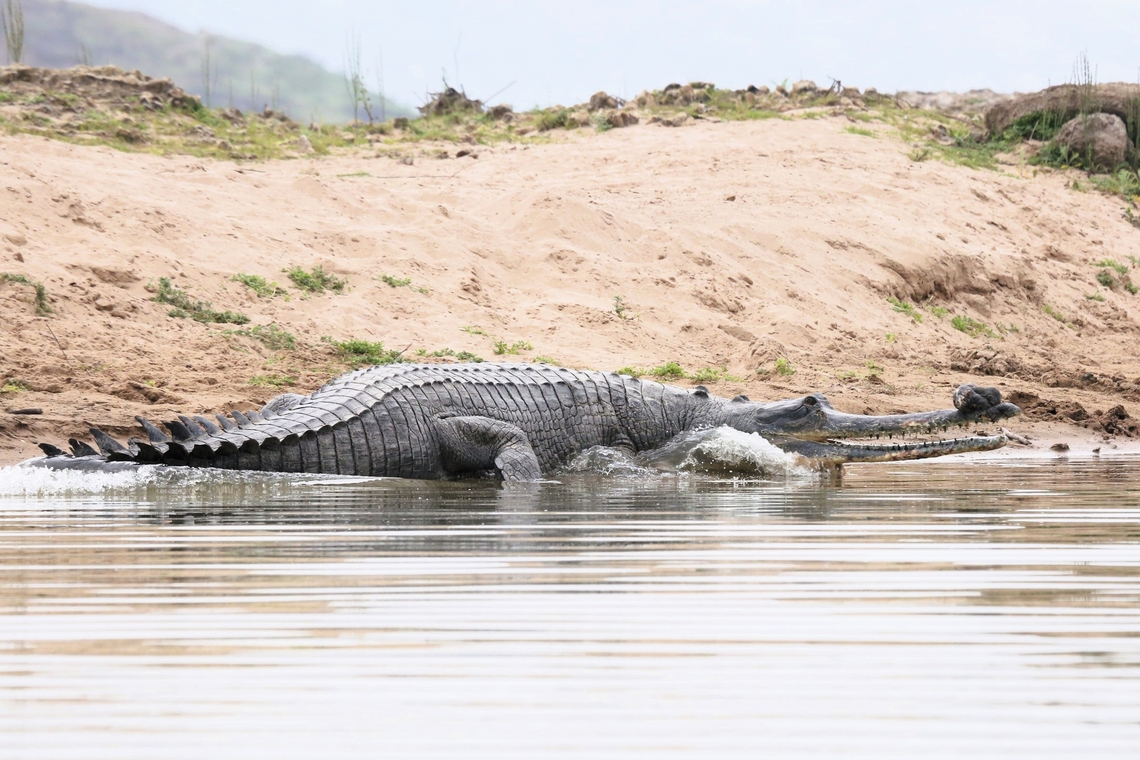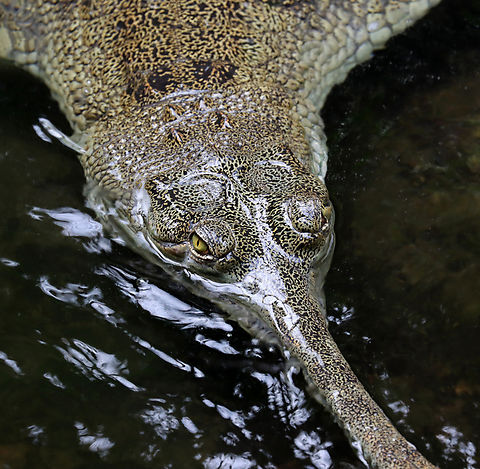
A large male Gharial on the Chambal river
This is a very large male leaving the shallows of the Uttar Pradesh bank of the Chambal river. Note the very large bulbous growth at the tip of its snout. This is called a "ghara" after the Indian mud pot which it is said to resemble. It has several functions including covering the male crocodiles' nostrils, acting as a vocal resonator, creating a loud, buzzing sound when the gharial vocalises and it is also a visual signal for females helping them to choose a mate, Gharials are dimorphic as the females do not possess a ghara. Additionally the females are only about 2/3rds the size of the males which are one of the largest crocodilians and can grow up to 6 metres long. Gharials also produce the largest eggs of any crocodilian with an average weight of 160 gms. These critically endangered crocodiles have lost over 98% of their population during the past 70-80 years. Very impressive creatures.

The gharial is a crocodilian of the family Gavialidae, native to the Indian Subcontinent. The global gharial population is estimated at less than 235 individuals, which are threatened by loss of riverine habitat, depletion of fish resources and use of fishing nets.
